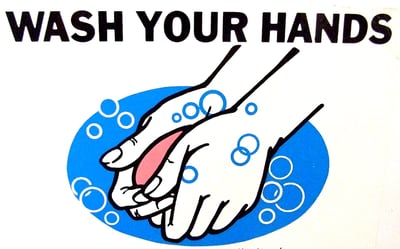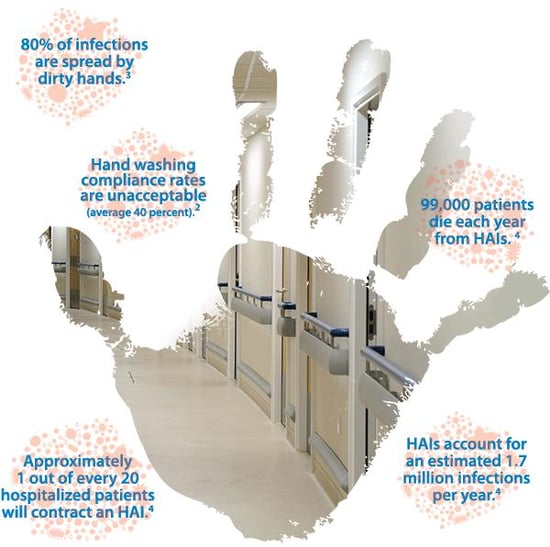
Every year, people around the U.S. take the Certified Nursing Assistant exam to grow their businesses. If you want to take the CNA exam soon, odds are good that you’re wondering – “what are the top mistakes on the CNA exam?”
The written CNA exam provides multiple choice questions with four possible answers and covers five competency areas. Feeling confident about the written test helps you get higher scores on the practical exam, especially in “critical skills” where 100% accuracy is required.
When studying for the CNA exam, you might think you should cover all areas equally. Still, it’s important to focus on the parts that are most challenging to you and to know which topics are most likely to cause mistakes. This way, you’ll save time and improve your score faster.

What Are the Top Mistakes on the CNA Exam? A Brief Review
Of the five competency areas covered by the CNA written exam, these are the toughest ones:
- Category II: Promotion of Function & Health of Resident
- Category IV: Basic Nursing Care Provided by the Nurse Aide
Understanding Category II will help you score better on questions that test Category IV skills, so it’s a good idea to start there. Let’s talk about the Category II topics that many CNA students find challenging.
Recognizing the Infection Cycle
Category II skills focus on preventing illness in the care environment.

CNAs must be alert to the potential for infection at all times, because:
- It is impossible to know when someone is spreading germs through observation alone.
- Patients in a care environment are usually at greater than average risk of an infection.
Infection control refers to steps taken to disrupt the infection cycle. You must know the six links in the infection cycle and the precautions that make infections less likely. For an infection to happen, all six links of the infection cycle must be connected.
That means the CNA is crucial in breaking the cycle and preventing illness!
Preventing infection begins as you suit up for work. You’re bound to be asked the right order for putting on personal protective equipment (PPE): It’s gown, mask, goggles, then gloves.

#1 on the List of Top Mistakes on the CNA Exam: The Six Links in the Infection Cycle
These six links can be thought of as a “chain” starting with pathogens or as a circular cycle:
Pathogen: A pathogen is any micro-organism that causes illness. The most common are bacteria, viruses, and fungi. Pathogens exist all around us and cannot be seen with the naked eye.
Reservoir: The reservoir is the location where the pathogen “lives.” Common reservoirs in care environments include food, standing water, a toilet seat, and anything dirty in the environment.
Portal of Exit: The place where the pathogen exits a reservoir. These can include the mouth, the nose, the rectum, the urinary tract, the skin, or the bodily fluids of an infected person (a host.)
Mode of Transmission: This is how a pathogen gets from one host to another. Transmission includes direct transmission, like skin contact, and indirect transmission, such as through the air.
Portal of Entry: This is the opening where the pathogen enters a new host. Some common ones include the nose, mouth, open wounds, or medical equipment like catheters and breathing tubes.
Susceptible Host: This is anyone who is at risk of developing an infection from a pathogen. That can include you, the caregiver, as well as your patients and other members of the care staff.
Using Standard Precautions to Prevent Infection
Certified Nursing Assistants should take standard precautions whenever they might be in contact with bodily fluids. The most important factor in stopping infection is washing your hands regularly with water and soap or antibacterial cleanser.

Not knowing all the circumstances in which to wash your hands is one of the top mistakes on the CNA exam. When in doubt, wash! In fact, you should wash your hands under all the following circumstances:
- Before starting your shift for the day and after ending your shift.
- Before and after you perform any kind of patient care.
- Before applying and after removing personal protective equipment.
- Before and after consuming any food or drink or using the restroom.
- Before and after facial contact like applying lip balm or wiping your nose.
- After any contact with patient bodily fluids, especially blood, or linens.
Even washing your hands could prove ineffective if the proper steps aren't followed:
Lather for at least ten seconds after applying soap. Cleanse your nails by rubbing them against your palms. When it’s time to rinse, be sure to do it with fingers pointed downward. After drying, use your paper towel to turn off the faucet – don’t touch the fixtures directly.
What are some of the other interventions you should know for the CNA exam?
Keeping Yourself Healthy
Looking after your own health is critical. Be aware of infection risks in your daily life, maintain healthy habits, and alert your team members if you show signs of infection. Be sure you are alert to the signs of common infections in patients, as they may not disclose symptoms right away.

Being Alert to Necessary Precautions
Precautions differ based on the equipment in use – such as catheters or syringes – and the health concerns of the patient. Be aware of special steps for preventing Surgical Site Infections (SSIs) and about isolation precautions, the special steps to take when diseases are easily spread.
Exercising Environmental Control
Cleanliness is the biggest part of environmental infection control. CNAs should regularly clean dirty items, ensure durable medical equipment is routinely cleaned by an expert, and keep staff food out of patient areas. Avoid contact with patient linens and do not sit on beds or on chairs.
Correctly Handling and Disposing of Waste
Know the steps in the disposal of healthcare waste, including collection, transportation, storage, treatment, and disposal. Dispose of hazardous waste in appropriately marked bags and use hard containers to transport sharp items like needles. Always assume that all waste is infected.
Recognizing Healthcare-Associated Infections (HAI)
Know common HAIs. MRSA – methicillin-resistant staphylococcus aureus – is spread through contact and creates a distinctive sore. TB – tuberculosis – is spread through the air. VRE – vancomycin-resistant enterococci – is usually spread by caregiver-to-patient contact. C-diff – clostridium difficile – is spread by contact with surfaces contaminated with feces.

For more information on infection control, see the CDC’s Guidelines for Healthcare-Associated Infection (HAI) Control, particularly the Top Recommendations to Prevent HAIs. You won't need to know every detail of these to pass the CNA, but the background information is valuable.
You Can Beat the Top Mistakes on the CNA Exam
The top mistakes on the CNA exam cause hundreds of people to miss out on CNA certification each year. By studying this guide, you’ll recognize some of the most challenging material in Category II, which will help you pinpoint the right answers in other categories.
The sooner you begin studying, the better your exam results will be. Recall is enhanced when you study in the morning right after waking up and in the evening right before bed. Good luck, and check our ongoing CNA exam series for more testing tips!

.png?width=220&name=Do%20You%20Pocatello%20Podcast_%20(1).png)

